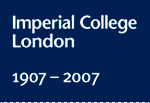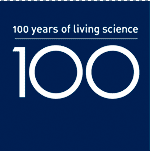Timeline
- 1845 – 1899 |
- 1900 – 1909 |
- 1910 – 1919 |
- 1920 – 1929 |
- 1930 – 1939 |
- 1940 – 1949 |
- 1950 – 1959 |
- 1960 – 1969 |
- 1970 – 1979 |
- 1980 – 1989 |
- 1990 – 1999 |
- 2000 – present
Imperial College 1940 - 1949
World
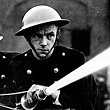 1940 - Battle of Britain - Blitz
1940 - Battle of Britain - Blitz
back to top
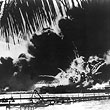 1941 - Japanese Attack Pearl Harbor
1941 - Japanese Attack Pearl Harbor
back to top
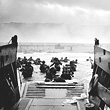 1944 - D-Day
1944 - D-Day
back to top
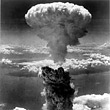 1945 - End of Second World War
1945 - End of Second World War
back to top
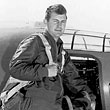 1947 - Chuck Yeager Breaks the Sound Barrier
1947 - Chuck Yeager Breaks the Sound Barrier
The first man to break the "sound barrier" was Capt. Charles E. Yeager, better known as Chuck Yeager, of the US Air Force. He reached this milestone of aviation history on 14 October 1947 over the test ranges at Muroc Field, now known as Edwards Air Force Base. Yeager accomplished this feat while flying the first Bell XS-1. Later renamed the X-1, this vehicle was a rocket-powered high-speed research aircraft.
1948 - National Health Service is established
The National Health Service or NHS as it is more commonly known, was set up on the 5th July 1948 to provide healthcare for all citizens, based on need, not the ability to pay.
It was launched as a single organisation based around 14 regional hospital boards. This new NHS was originally split into three parts:
- hospital services
- family doctors, dentists, opticians and pharmacists
- local authority health services, including community nursing and health visiting
back to top
College
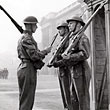 1941 - College life during the war
1941 - College life during the war
As students were unable to train with the University of London Officer Training Corps because of the Second World War, the Rector, Sir Henry Tizard (1885-1959) invited Major W.H. Bevan to address the students with the idea of them forming a Home Guard Platoon. "C" Company, 2 London, Home Guard, Imperial's own company, formed in September 1941, with the addition of some Royal College of Music volunteers later that year.
At first it was a student Home Guard Platoon, but in 1942 was joined by staff members from Imperial College Maintenance Party, the College war emergency group. C Company was responsible for an area including Kensington Gardens, Knightsbridge, Queen's Gate, Fulham Road and Old Brompton Road to Drayton Gardens. In all, 250 Imperial College students passed through the Company.
Major Bevan showed his high regard for the Company by obtaining special official appreciation from the military authorities in the form of two presentations to individuals of a Certificate of Good Conduct and Commendation. The Company was at "Stand Down" from 1944.
On 13th and 14th May 1944 some members of C Company, including Charles Benjamin Alcock, a Chemistry Undergraduate (1942-1944), shown in the picture, were part of the King's Guard at Buckingham Place.
An Imperial College Maintenance Party and Air Raid Precaution (ARP) centre was set up and housed in the RSM building with W. R Jones in charge. Many staff volunteered for night watching and weekend duties.
The Imperial College Administration and Maintenance Party was formed to undertake fire watching and other Air Raid Precautions. ARP duties were extremely important for the protection of College buildings and personnel. Dr H.J.T. Ellingham, Chemistry, played a leading part in A.R.P. activities, including the leisure aspects.
Profs. Read and Sweeting volunteered for the permanent squad and for most of the 1940-41 session lived in the basement of the Mines Building, alongside Dr. Davies, W. S. Tweed and Faulkner of the Mining Department. They cooked and cleaned for themselves, sleeping in camp-beds (christened by Read as the "Ghetto"). The Fire Captain was the Head Cleaner of the R.S.M., Bill Guiver.
Special regulations related to enemy air raids were applied during College hours. A loud bell warned of 'approaching raiders', often followed by another denoting 'raiders overhead'. Staff and students were instructed to leave their rooms and make for the basement. Early in the war this descent occurred about once a day but later in 1943/44 it frequently happened three times daily.
There were two direct hits by enemy bombs on College buildings, but no-one was injured. One bomb exploded at the rear of the RSM and one fell on the City and Guilds Waterhouse building, but did not explode.
Parts of the Beit Building were taken over to house military personnel early in the war, and returned to College in 1942. College was able to claim for damage caused during the requisition period, as were all owners of similarly requisitioned buildings.
But besides study and Home Guard/ARP duties, not to mention the problems of rationing and public transport, students carried on with activities such as amateur dramatics and sports. The Radio Society was shut down at the start of the war for fear of a breach of security.
back to top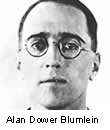 1944 - Alumni and the Second World War
1944 - Alumni and the Second World War
Below are just a few of the many alumni who contributed to the war effort:
Sir Frederick Handley-Page (1885-1962) City and Guilds (Finsbury Technical College 1901-03), founded Britain's first aircraft manufacturing company in 1909. During World War II his company produced heavy bombers, including the Halifax.
Alan Dower Blumlein (Electrical Engineering 1903-1942) City and Guilds 1921-23 worked for EMI on a radar system, and adapted some of his previous work on circuit design technology for use in television to a 60 MHz pulsed radar. Accuracy of navigation was very important to the accuracy of bombing and it was to increase navigation accuracy that the H2S ground mapping radar was designed. Blumlein researched one format using the klystron as a transmitter, but development of this was slow, and the Telecommunications Research Establishment with GEC was speedily developing a system using the magnetron. It was during a test flight demonstrating the TRE/GEC model that Blumlein died as faulty maintenance of the Halifax caused it to crash.
Bruce White (Electrical Engineering 1902-05) directed the work on the Mulberry Harbours, the sheltered harbour structures used to land equipment and supplies in readiness for the Allies D-Day landings for the War Office. Advice was taken from staff in the Civil Engineering Department.
A.C. Hartley (Civil and Mechanical 1908-10) worked on implementing the system for Fog Dispersal (FIDO - Fog Investigation and Dispersal) on selected airfields for the Petroleum Warfare Department. His co-workers included E. G. Walker (Civil and Mechanical 1902-04) and D.A. Fox (Civil 1933). The Chief Engineer for the contractors was W.H.G. Roach (Civil 1919-21).
back to top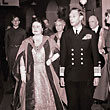 1945 - Visit of King & Queen that Commemoration Day is named after (October 1945)
1945 - Visit of King & Queen that Commemoration Day is named after (October 1945)
King George VI and Queen Elizabeth in 1945 visited College to commemorate centenary of Royal College of Science, oldest forerunner to Imperial.
King George said: "You students here assembled - men and women who soon will be going out from the Imperial College to your work in the world - have not only an opportunity but also a responsibility greater than men of science have known before. To you, I say: Regard your knowledge and your skill always in the light of a trust for the benefit of humanity, and thereby ensure, so far as in you lies, that science may never be put to uses which offend the higher conscience of mankind."
back to top 1945 - Undercover war work
1945 - Undercover war work
Colonel Bill Hudson worked for the Special Operations Executive Section D "ungentlemanly" warfare section, and Mrs Yvonne Cormeau, who worked for the College Archives in the 1960s, was a member of the French Resistance, her code name being "Annette".
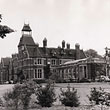 1947 - Acquisition of Silwood Park Campus
1947 - Acquisition of Silwood Park Campus
Imperial College acquired Silwood Park in 1947, as a Field Station to provide a site for research and teaching in those aspects of Biology not well suited for the main London campus. Instrumental in this was Munroe.
Watch a documentary made about Silwood Park in 1982.
back to top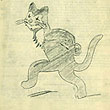 1949 - Felix - student newspaper - launched 9 December 1949
1949 - Felix - student newspaper - launched 9 December 1949
Felix, Imperial's student newspaper, was launched on 9 December 1949.
back to top
People
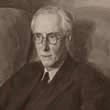 1942 - Sir Richard Vynne Southwell (1888-1970)
1942 - Sir Richard Vynne Southwell (1888-1970)
Educated at Cambridge gained first class honours in both the Mathematical and Mechanical Science tripos in 1912. He was made Fellow of Trinity College, becoming Lecturer in Mechanical Sciences in 1914.
During WWI he served in the Royal Naval Air Service and post war worked at the Royal Aircraft Establishment Farnborough as head of the Aerodynamics and Structures Divisions.
He moved to the National Physical Laboratory in 1920, moving back to Trinity College as Fellow and Mathematics Lecturer in 1925. Southwell moved to Oxford in 1929 as Professor of Engineering Science and Fellow of Brasenose where he developed a school of research. His wide experience led him to becoming a member of many governmental technical committees, including the Air Ministry when the airships R.100 and R101 were being devised.
In 1942 he joined Imperial College as Rector, retiring in 1948. Whilst at Imperial he continued his research interests, but also gave time to students and was instrumental in the opening of Selkirk Hall, a Student residence.
back to top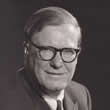 William Penney, Baron Penney of East Hendred (1909-1991)
William Penney, Baron Penney of East Hendred (1909-1991)
William Penney worked as a Laboratory Assistant before gaining a scholarship to study at Imperial, where he obtained his BSc and PhD, in mathematics. He then went to the University of Wisconsin and gained an MA, then to Trinity College Cambridge on an 1851 Senior Student Scholarship and a PhD on the application of quantum mechanics to the physics of crystals.
Between 1936 and 1945 he was Assistant Professor Mathematics at Imperial. He also undertook work for the Admiralty, which included studying underwater blast waves and assisted with the design of the Mulberry Harbours, the protective floating harbours that allowed disembarkment for the Allied invasion of France to take place on D-Day.
At the Home Office his appointments led to his becoming Principal DSIR Scientific Officer. In this capacity he was part of the British team working on the atomic bomb, code named the Tube Alloys Project, released from Imperial, he was then seconded to work on the Manhattan Project at Los Alamos, when the Allies combined their atomic bomb development in 1944.
He remained there until 1945, working on calculations relating to the release of the bomb. He witnessed the Nagasaki explosion at a distance as the observation plane he was allowed at short notice to board was delayed. He was part of the investigative team which visited Nagasaki and Hiroshima to assess the aftermath of the bombs in 1945.
Penney next became director of work on the British atomic bomb until its first test in 1952. Declining a Chair at Oxford, he continued to work in the nuclear industry and was a Board member of the newly formed UKAEA, United Kingdom Atomic Energy Authority, then Chairman between 1964 and 1967.
He became Rector of Imperial in 1967. In recognition of his services to Britain he was appointed OBE in1946, OBE Knight Commander 1952 and a life peerage as Lord Penney of East Hendred in 1967.and OM 1969. He was Rector of Imperial between 1967 and 1973, at what he felt was a difficult time for College administration, although he was an able and successful leader of Imperial. He did not leave any personal papers, deciding to burn his collection shortly before he died. The William Penney Laboratories, a new building for Computing, opened on the South Kensington Campus in 1988.
back to top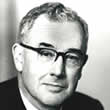 Alfred John Sutton Pippard (1891-1969)
Alfred John Sutton Pippard (1891-1969)
Educated at Bristol University, from 1911, Pippard first worked for the Pontypridd and Rhondda Joint Water Board.
During WWI he worked on stress anaylsis of aircraft frames for the Air Ministry. This led to his becoming Visiting Lecturer at Imperial, but in 1922 he took the Chair of Engineering at University College Cardiff, then went to Bristol University.
In 1933 he came to Imperial as Professor of engineering and Head of the Civil Engineering Department, where he set about reorganising and modernising how structural analysis was taught. He undertook much research himself, particularly on the voussoir arch.
In WWII Pippard spent a year at the Research and Experiments Department, Princes Risborough, returning to Imperial to work on submarine hull structures and strength of bridges for military operations. In 1946 he introduced soil mechanics and concrete technology specialists to the staff. He became FRS in 1954 and was President of the Institution of Civil Engineers 1958-1959.
back to top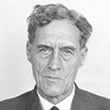 Patrick Maynard Stuart Blackett (1897-1974)
Patrick Maynard Stuart Blackett (1897-1974)
One of the leading physicists of the 20th century, Patrick Blackett was educated at Cambridge, where he also worked at the Cavendish Laboratory. In 1933 he moved to a Professorship at Birkbeck College and in 1937 to Manchester. He joined Imperial College as a Professor in 1953, retiring 1965. He was elected President of the Royal Society in 1965.
While working at Cambridge, Blackett developed an interest in cloud chambers. Blackett, with his co-worker G.P.S.Occhialini discovered the positron. The same particle was discovered at the same time by C.D.Anderson. Blackett also worked extensively on cosmic rays. He was awarded the Nobel Prize for Physics in 1948. Blackett can thus be seen as one of the first and leading experts on anti-matter.
Blackett was actively involved in the World War effort. He was instrumental in founding the field of Operational Research, which, among other successes, improved the survival chances of ship convoys.
After the war Blackett was strongly against the participation of Britain in the nuclear arms race. He also thought Britain had an obligation to improve the scientific and technological conditions in its former colonies.
back to top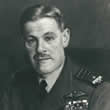 Air Chief -Marshall Sir Roderic Hill (1894-1954)
Air Chief -Marshall Sir Roderic Hill (1894-1954)
Roderic Hill studied architecture prior to WWI. He then joined the army, later transferring to the Royal Flying Corps. He earned the Military Cross, and the Air Force Cross for his work as an experimental pilot.
He was skilled in drawing and contributed to the journal Flight during WWI. He gave 32 years service to the Royal Flying Corps and the RAF, during which he undertook much technical experimental work himself. He was Director of technical Services to the British Air Commission in Washington 1941-1942 and became Commander in Chief of Fighter Command, continuing to fly operations himself. His removal of the guns to the coast during WWII saved London from the threat of many of the flying bombs.
He retired for the RAF and became Rector of Imperial in 1948. Here he gave great consideration to the sciences that he knew little of. He was a charming and energetic man, who saw the need for students to gain a rounded education, hence his introduction of Touchstone weekends – a general studies and discussion forum at Silwood Park alongside music recitals and arts lectures at lunchtimes in College. Hill was appointed to a post his father had also held, that of Vice Chancellor of London University in 1953.
back to top© 2007 Imperial College London
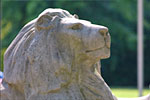
Through the first decade of the twenty-first century the campaign seeks to philanthropically raise £207 million from Imperial’s alumni, staff and friends, and donations from charitable foundations and industry.
Where your support can make a differenceGive now
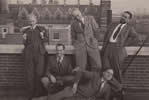
We’re celebrating 100 years of living science with 100 stories. We’ve collected some of them already, and invite you to share your own stories and memories.
